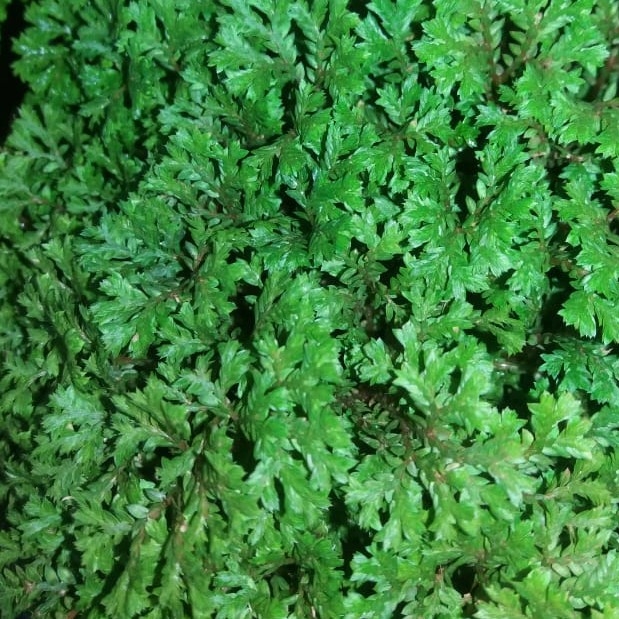  ID Pls : 16 posts by 6 authors. Attachments (2) Pls find attached some pics sent by my friend for ID. It seems to be a fern species but not quite sure. Can any of the esteemed members help in identifying the species please? Fern! Yes! Could it be a species of Selaginella ?
i think its a moss. need a little better picture of the mass below these leaf like structures and why is it so densely growing in pot (the first pic seems have a edge of a grey ???pot). did he plant a thousand spores? also better quality pic that can be enlarged would help It was purchased as an ornamental plant by one Professor. He was too curious to know the botanical details and contacted me. I too got curious. The distribution pattern of spores would have helped in better identification. I will ask him to send a better picture of the under side of fronds. spores i am referring to is for growing the moss. it will not show up in the fronds.
spores show in ferns, not moss forgot to say it. any more informative pictures would help. All the while I thought specimen in the pic was a fern! i think you are on the right track its still too early, lets get more info and pictures Test for Selaginella. Dry few plants. Keep the dried plants for a few weeks. Pour water. They come alive: “resurrection plant”. It was purchased as an ornamental plant by one Professor (in Himachal Pradesh ?)
That is indeed a real horticultural gem of a plant – I am jealous! Would love to grow that! Question is which species? – but for all Selaginella we need to see the strobili in close-up detail and the cilia/teeth on the leaves – and this one is not fertile yet.
The stiff stilt-like rhizoids remind me of S. pennata, S. bisulcata or S. plana, but that’s assuming it is Himalayan or widely cultivated in India, which I rather doubt. It might even be an American exotic or something, as far as we know – so I can’t tell. It does look a bit like a compressed S. bisulcata, I suppose – from Nepal eastwards to NE India.
The other thing is its dwarf habit suggests to me that it may well be a developed dwarf cultivar of some species, but I don’t find it in Hoshizaki’s Encyclopaedia of Cultivated Ferns.
If it becomes fertile later on, at least we could then see what group it is in.
Good luck with it – it should be a Fern Show gold-medal plant!
|
Disclaimer
1. For any mistake in identification or for becoming efloraofindia e-group member (for contributing towards building of efloraofindia or otherwise), pl. mail to indiantreepix@googlegroups.com or itpmods@googlegroups.com
2. For better viewing of species’ pages, colour scheme & formatting is being followed as: Description of the species, Details of other flora species on the same page, Uses/ harms, Distribution, Abundance/ Location/ Flowering time & date, Habit & habitat, Etymology & pronunciation, Other interesting information, stories etc., Others, Botanical names, Common names, Main point of discussion below, Discussion about Botanical names.
Navigation
- Award for eFloraofIndia
- Colour scheme & formatting
- Copyrights, Permissions, Citations
- eFloraofIndia appreciated
- Names of Plants in India site
- Flowersofindia site
- Posting Guidelines
- For members’ information
- Logo, Tagline, Acronym
- Volunteers required
- ‘Pitamah’ of eFloraofIndia
- ‘अजेय’ ‘Ajey’ of eFloraofIndia
- ‘Saarthi’ ‘सारथि’ of eFloraofIndia
- ‘Jewel’ of eFloraofIndia
- ‘Grassman’ of eFloraofIndia
